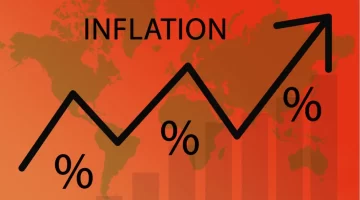
Micro-investing: Your Pocket-Sized Path to Building Wealth
Let’s be honest. The world of investing has always felt a bit… exclusive. Like a private club with a steep cover charge. You needed thousands just to get in the door, a fancy broker to wave you through, and a secret decoder ring to understand the jargon.
Well, not anymore. Micro-investing has blown the doors off that club. It’s the simple, powerful idea that you don’t need to be wealthy to start building wealth. Even your spare change—the digital lint from your daily coffee or online shopping—can become a seedling for your financial future.
What Exactly Is Micro-Investing, Anyway?
Think of it like a digital piggy bank, but instead of collecting dust, your money goes to work. Micro-investing platforms allow you to invest very small amounts of money, often just a few dollars at a time, into assets like stocks and ETFs (Exchange-Traded Funds).
The real magic? They’ve demolished the traditional barriers. Low fees. User-friendly apps. And, honestly, a much less intimidating learning curve. It’s designed for the beginner, for the person who’s curious but cautious.
Getting Started: Choosing Your Micro-Investing Platform
Alright, so you’re sold on the idea. The next step is picking your tool. Not all platforms are created equal, and the best one for you depends on your personal style. Here’s a quick breakdown of the main types you’ll encounter.
Round-Up Apps: The Set-and-Forget Strategy
These are the true “spare change” warriors. You link your debit or credit card, and every time you make a purchase, the app rounds up to the nearest dollar and invests the difference. Buy a $3.50 latte? Fifty cents gets swept into your investment account. It’s effortless, almost invisible saving.
This is perfect if you struggle with consistency. It automates the habit of investing, turning your everyday spending into a quiet, background wealth-building engine.
Commission-Free Trading Apps: For the Hands-On Beginner
These platforms give you more direct control. You can buy fractional shares of individual companies—meaning you can own a piece of Amazon or Tesla with just $5 or $10, not the full share price of hundreds or thousands.
If you’re the type who wants to learn by doing and pick specific companies you believe in, this is your playground. It’s a low-risk way to get your feet wet in the stock market.
Robo-Advisor Apps: The “Do It For Me” Approach
Prefer to just set a goal and let the experts handle the details? Robo-advisors are your answer. You answer a few questions about your risk tolerance and goals, and the algorithm builds and manages a diversified portfolio for you. It’s a truly hands-off approach to micro-investing for beginners who want a guided experience.
| Platform Type | Best For | Key Feature |
| Round-Up Apps | The passive saver, the forgetful investor | Automated investing from spare change |
| Commission-Free Apps | The curious learner, the hands-on user | Buying fractional shares of specific stocks |
| Robo-Advisors | The set-and-forget investor, the beginner | Automated, diversified portfolio management |
Smart Strategies to Make Your Micro-Investing Count
Okay, you’ve got the app downloaded. Now what? Throwing a few bucks at random stocks isn’t a strategy. It’s a hobby. To make this work, you need a plan. Here are a few powerful micro-investing strategies for beginners.
1. Consistency is Your Superpower
Forget trying to time the market. It’s a fool’s errand, even for the pros. Your greatest advantage is time and regularity. Setting up a recurring transfer of even $10 a week is far more powerful than making one random $100 investment. This strategy, called dollar-cost averaging, smooths out the market’s ups and downs.
2. Diversify, Don’t Di-worsify
Don’t put all your eggs in one basket. It’s the oldest advice in the book for a reason. Instead of betting everything on one “hot” stock, spread your micro-investments across different assets. The easiest way to do this? Look for low-cost ETFs that track the entire market, like an S&P 500 ETF. It’s instant diversification in a single click.
3. Define Your “Why”
Are you investing for a down payment in ten years? A dream vacation in two? A retirement fund in forty? Your goal dictates your strategy. A long-term goal can handle more risk (meaning more stocks), while a short-term goal should be more conservative. Naming your goal makes the process feel real, and it’s a fantastic motivator.
The Mindset: What to Really Expect
Micro-investing is a marathon, not a sprint. You won’t see life-changing gains overnight. And that’s the point. It’s about building the habit, becoming comfortable with the markets, and letting compound interest do its slow, silent work over years and decades.
You’ll see your account balance dip sometimes. That’s normal. In fact, it’s a good thing—it means you’re buying in at lower prices with your consistent contributions. The key is to not let short-term noise panic you into selling. Just stay the course.
The Final Word: Small Starts, Big Futures
Micro-investing isn’t about getting rich quick. It’s about empowerment. It’s about taking that first, manageable step toward financial literacy and independence. It proves that you don’t need a windfall to start; you just need the willingness to begin with what you have, right now.
The mightiest oak was once a little nut that held its ground. Your financial future? It might just start with that handful of digital spare change you didn’t even know you had.





